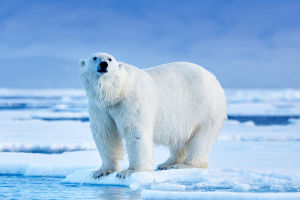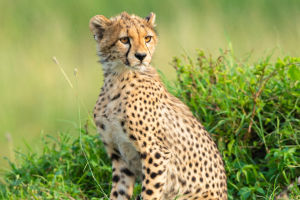Regal, powerful, and commanding, the lion has rightfully earned its title as "The King of Beasts." With its golden mane and fierce roar, the lion symbolizes strength, courage, and authority.
Lykkers, but there’s much more to this majestic creature than meets the eye. Whether roaming the African savannas or ruling over a pride, the lion’s role in the animal kingdom is as captivating as it is vital.
1. The Lion's Habitat
Lions are predominantly found in Africa, particularly in sub-Saharan regions, though a small population of Asiatic lions still resides in India’s Gir Forest. These incredible creatures inhabit grassy plains and savannas, where they blend seamlessly into their golden surroundings.
Did You Know? Once roaming across Europe, Asia, and Africa, lions are now primarily limited to Africa, with just around 650 Asiatic lions left in the wild.
2. Life in the Pride
Unlike many other big cats, lions are social animals and live in groups called prides. A pride typically consists of several lionesses, their cubs, and one or two dominant male lions. The females do the majority of the hunting, working as a team to bring down large prey, while the males protect the pride from rivals.
Fun Fact: Lionesses are skilled hunters and can take down prey twice their size, including zebras, buffalo, and even giraffes!
Why is The Lion Considered The King of The Jungle?
Video By WildCiencias
3. The Iconic Lion's Roar
One of the most defining traits of a lion is its earth-shaking roar. Their roars can be heard up to five miles away and serve as a powerful tool for communication, whether it’s to mark their territory or call members of the pride. The sound is as intimidating as it is awe-inspiring, solidifying the lion’s reputation as the king of the wild.
Tip: Listen for a lion’s roar at dawn or dusk — this is when they’re most active and vocal.
4. The Lion's Majestic Mane
Male lions are easily distinguished by their thick, majestic manes, which can range in color from light brown to almost black. The darker and fuller the mane, the more attractive the lion is to potential mates, and it also signifies a strong and healthy individual.
Why It Matters: A lion’s mane acts as a protective shield during fights with other males and is a visual representation of dominance within the pride.
5. Lions and Their Symbolism
Throughout history, lions have held significant meaning in various cultures. From being revered as symbols of royalty and bravery in ancient civilizations to being featured in coats of arms, literature, and mythology, lions have always inspired awe and admiration.
In Popular Culture: Lions are not only a popular figure in art and storytelling but also play a prominent role in spiritual iconography, often representing leadership and protection.
6. The Conservation Challenge
Despite their iconic status, lions are facing significant threats from habitat loss, human-wildlife conflict, and poaching. Over the past century, their population has decreased dramatically, with fewer than 25,000 lions remaining in the wild.
How You Can Help: Supporting wildlife conservation efforts and responsible eco-tourism can aid in protecting these magnificent animals and ensuring future generations get to witness the beauty of the lion in the wild.
The lion is more than just the "King of Beasts" — it is a symbol of power, leadership, and community. Its presence in the animal kingdom and human culture is undeniable, and its role in the ecosystem is crucial. As we continue to admire this majestic creature, it’s essential to protect and preserve the lion’s legacy, ensuring they remain a commanding force in the wild for generations to come.


